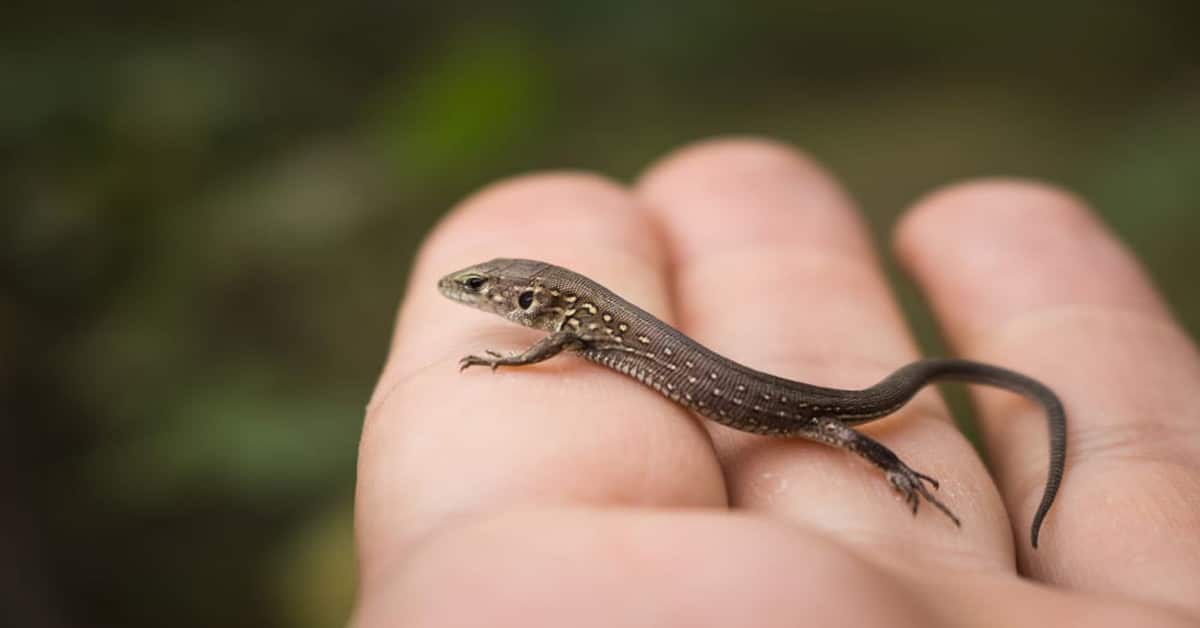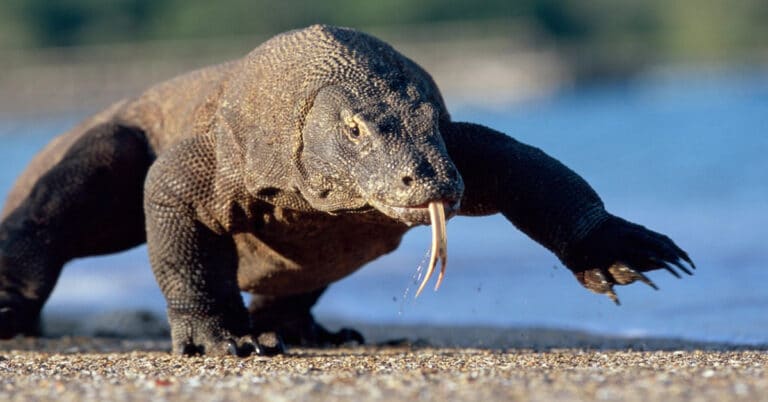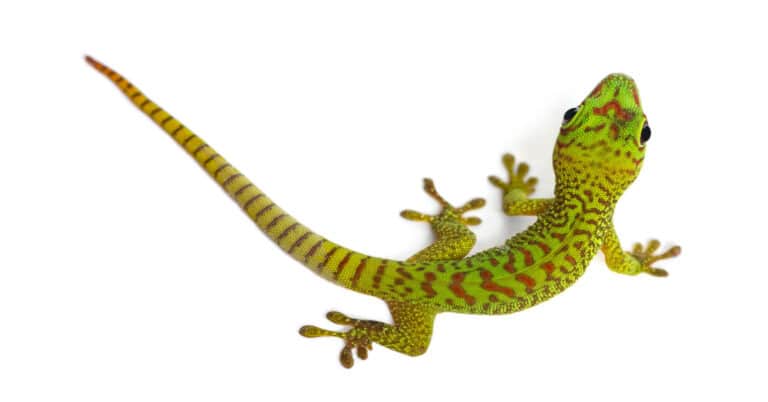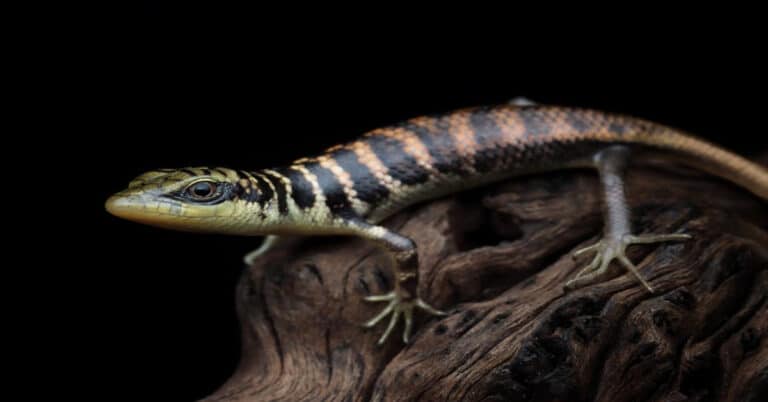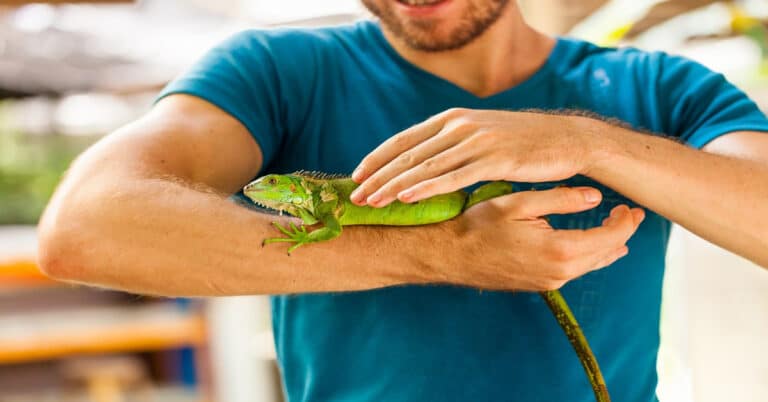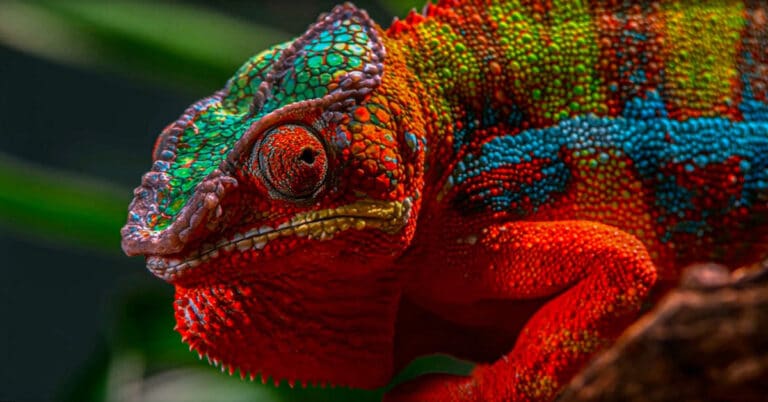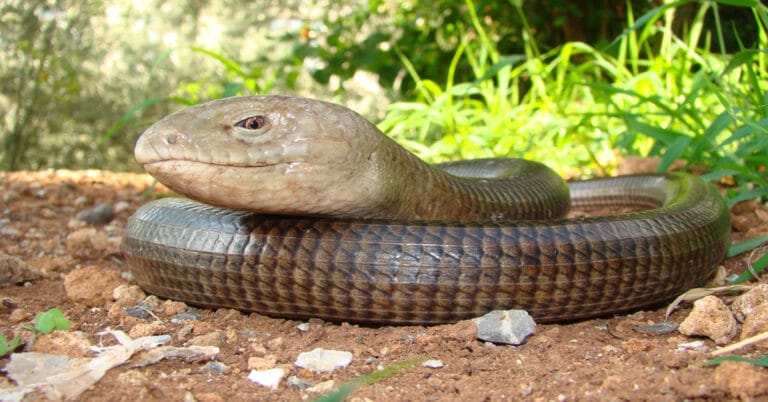Small Lizards
The world has many kinds of lizards. An average hobbyist can avail of many of them as pets. The problem that the hobbyist faces is one of choice. How to find the perfect pet? By understanding more about the differences between lizards and learning more about the aspects that appeal to you, you can make your choice, quite easy.
Size is a major factor that you have to consider in selecting the perfect lizard as a pet. Lizards differ a lot in size. Some lizards will grow to a maximum of several inches in length. Other lizards may grow to several feet long. It is the size of the lizard that decides the size of its dwelling. You can think of how big a house you can provide for your pet.
Before you choose your pet lizard, you have to make sure that you can meet all its requirements. You can narrow down your options well ahead of time and find out how the needs of various reptiles will match with what you can offer, It is highly likely that you will get a pet that will give you pleasure for years in the future.
If you are new to lizards as pets, it is better to start with the ones that are easy to care for and handle. The following list of lizards is ideal for beginners, if you are ready to invest in proper equipment.
Having small lizards as pets, can be quite a rewarding experience. They are comparatively easy to handle. Think of what a unique addition, they will make to your household! Before you buy a small lizard as a pet, it is imperative that you learn to take care of it.
Do a lot of research and find out all about the lizard that you intend to buy. You have to consider carefully if you can devote the care needed over the complete lifespan of the pet.
Remember:For many types of lizards, you are making a long-term commitment.
A lizard may be inexpensive, the equipment needed for the proper care of the lizard could prove very expensive.
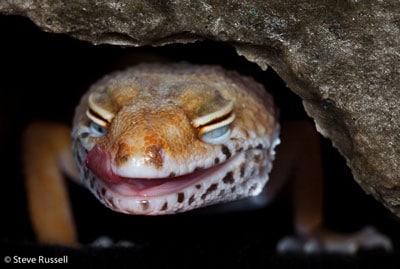
Given below is a list of small lizards that could prove lovely pets and long-time friends
Leopard Gecko (Eublepharis Emacularius)
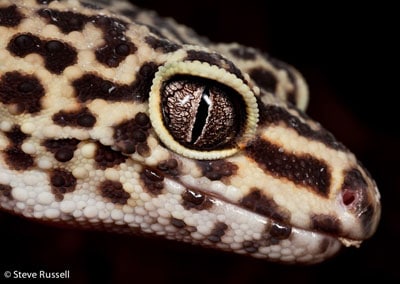
The most popular reptile kept as a pet in captivity today could very well be the leopard Gecko. These lizards are small. You can get them in a number of pretty colors and patterns. They have only simple care requirements. They are generally docile creatures and tame easily. Most novice keepers agree that these lovely geckos give them a lot of pleasure in their familiar and docile interaction.
Since these lizards are nocturnal, they do not have any special lighting requirements like other lizards. You must feed the babies daily. You can feed the adults every alternate day. You must leave them alone for a few days without issue. These are hardy creatures and they make great first time reptile pets.
Leopard Geckos are great beginner lizards. They are docile and very easy to take care of. They are nocturnal creatures and you do not have to buy expensive UVA/UVB lighting for them. They manage well with a ten gallon or 20 gallon tank.
The lifespan of this reptile is 15 to 20 years.. The size varies between 7 and 10 inches.
The minimum cage size necessary is a 10 gallon tank or equivalent. The only special care requirement is controlled heating.
Pros: They are inexpensive and easy to find. They have, friendly looks, are small and space-efficient.
Cons: Being Insectivorous, they need need a constant stock of crickets, mealworms and waxworms at your home.
Red Ackie (Varanus Acanthuras)
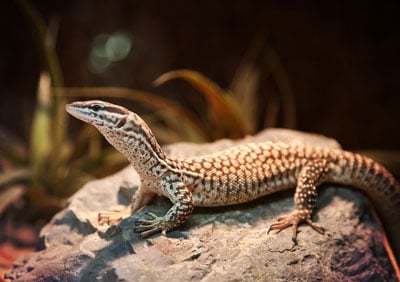
Ackies, also known as ridge-tailed or spiny tail lizard, is a true dwarf and makes an ideal captive pet with little care requirements. If you are on the lookout for a pet monitor lizard, this could be your ideal pet.
The Ackies sport beautiful colors and patterns. It is fun to watch them and they are very active. You can hold them on a daily basis and they tame well. You can feed them every alternate day and they normally accept a variety of foods including crickets and pinky mice.
The Life span of the Ackie is around 10+ years Their size range from 16-26 inches.
Minimum Cage size for adults: is a 55 gallon tank or equivalent.
Special Care Requirements include: Controlled heating and, UVB lighting.
Pros: The Ackies are relatively small, They are robust creatures, docile, and with unique looks.
Cons: They are more expensive than other ‘beginner’ lizards. They can be, can be difficult to locate.
The Bearded Dragon
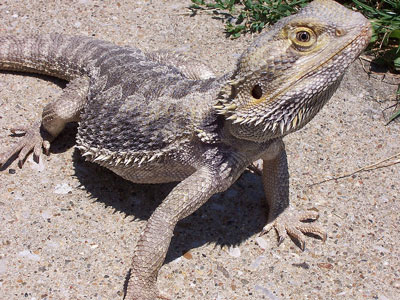
Bearded Dragons are also known as Beardies. They make wonderful first pet lizards. They are very docile. Their comparatively small size and simple care requirements have endeared them to pet owners. There is a debate raging as to which is the best lizard pet, the Leopard Gecko or the Bearded Dragon, and both sides have enough ammunition to defend their favorite reptile.
Beardies are very active in daytime and make for great display animals. Their trusting, laid back nature, make them easy to handle. They make a great introduction to reptiles, even for those people who are afraid of snakes and lizards.
The Life span of the Beardie is around: 8-10 years. Their size ranges from 14 to 24 inches.
The minimum cage size for adults: 40 gallon tank or equivalent.
Special Care Requirements: Include daily access to special UVB lighting, controlled heating, The babies are particularly delicate even though the adults are very robust.
These lizards are inexpensive, easy to locate and they have only limited care requirements.
Being Omnivorous, they require both insects and vegetation in their diet and lots of fresh greens every day.
Blue-tongued Skink (Tiliqua scincoides)
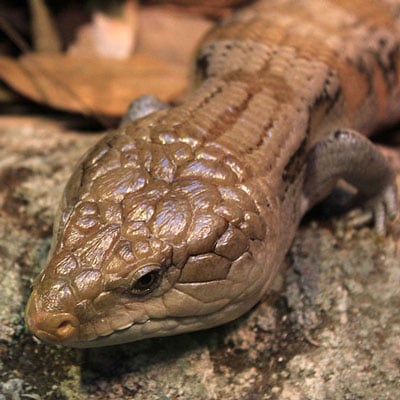
The most common among the many species of Blue lizards are Blue-tongued Skinks. As pets, they need only as much care as the bearded dragon. Skinks are diurnal animals. They need the complete spectrum of lamps and lighting. Both sidewise and lengthwise, you will find similarities between the beardies and the skinks. Keep the skink’s terrarium dimensions same as that of the Beardies. They are docile and tolerate regular handling well. They are omnivores. You can feed the blue tongued skink worms, vegetables and insects. The proportion is slightly different in the case of the Bearded Dragon.
Nonetheless, the skink is different in many aspects from the bearded dragon and other lizards. The skink is much quieter when compared to the bearded dragon. In the matter of docility the bearded dragon scores better. The skink consumes vegetables better at a younger age, making it easy to feed.
Advantages – The blue-tongued skink has a long life expectancy (from 18 to 20 years). This means that your initial investment will pay off eventually.
Disadvantages – The skink shows the tendency to defecate more often.
Carolina Anole (Anolis carolinensis)
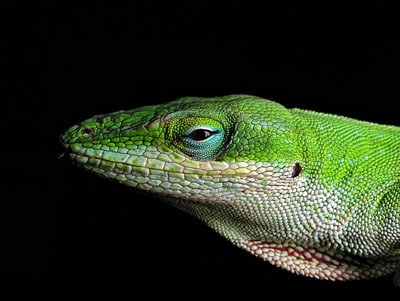
Carolina Anole is the smallest reptile in any keeper’s favorite list. Generally, they measure about 15 to 18 cms. But they need a larger terrarium than you can imagine. You should keep these reptiles in groups, generally a male with many females. This means that you will need a terrarium measuring 50x 40x 35 cms to house a small group of 4.
Carolina Anole is a docile lizard but it is very shy and they do not like people handling them. Once they get used to their terrarium they exhibit an extrovert nature. The Anole feeds on insects and even worms. Their maintenance cost in terms of feeding is quite low, since their food intake itself is minimal when compared to other lizards. They will feel totally content with a couple of crickets a day.
Uromastyx (Spiny Tailed Gecko)
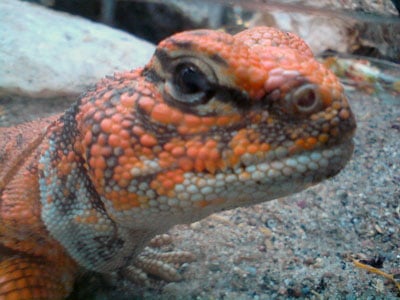
The uromastyxs, also called spiny-tailed lizards or the uros belong to a type of lizard can make an excellent pet. Uros are similar to the beardies in maintenance and care. These spiny-tailed lizards hail from a hot, dry environment – hotter and drier than from where the beardies come. They range in size from 10 inches to 3 feet. Being a good pet, we have included this in the list of small lizards.
Most of the Uros live in hot, dry environments. Such environments are easy to simulate in captivity, at least for North Americans. It is easier to create such dry environments than moist, tropical environs.
The euros come in a variety of colors. The genus contains 16 varied species of Uros. So you can see plenty of diversity in the range and appearance.
The Uromastyx is an omnivore which means that it will eat both vegetables / plants and insects.
Crested Geckos
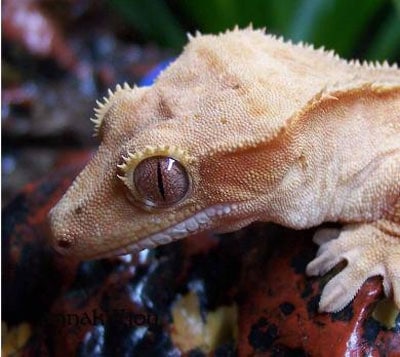
Crested Gecko is fast gaining popularity in the pet business. “Cresties” need the simplest care in comparison to other lizards. They do not need any special heating or lighting care. Any temperature that is above 80F will cause them stress. We can feed them packaged and powdered fruits mixed with water. They do not need insects or complicated diets.
Cresties come in a variety of patterns and colors. The patterns vary with stripes and spots and a lot of things in between. You can easily handle them and they tame easily, However, you must remember that they are small and delicate compared to the larger ones. They tend to lose their tails accidently. While the loss of the tail causes them no harm, the tails do not grow back again.
Cresties live for about: 5-15 years’ They measure 5 to 8 inches long.
Minimum Cage size as adults: is 20 gallons tank or equivalent
Special Care Requirements: You must provide natural or artificial foliage for climbing and hiding.
Pros: They have most simple lizard care requirements; They need no supplemental heating or lighting, You can give them simple mix-with-water diet
Cons: They spend a lot of time hiding. They are nocturnal. These lizards are very delicate to handle.
African Fat Tailed Geckos (Hemitheconyx Caudicinctus)
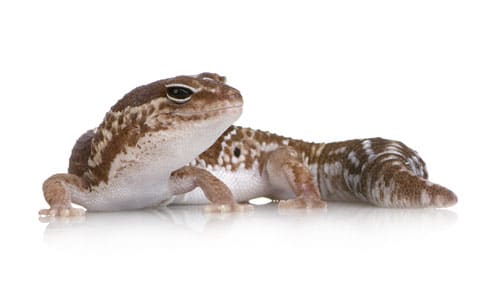
These lizards can live for up to 15 years or more.
Size:
These geckos reach lengths of 8-10 inches.
Habits
These are nocturnal reptiles. They are usually docile, but shy. You should never house gecko males together.
Appearance:
These Geckos exhibit two dominant patterns-one with a white stripe running down the back and one with the stripes absent. They appear in many colors. Dark and light brown are the common colors. The remarkable feature of the gecko is its fat, large tail.
A 10 gallon container will suffice for one Gecko. Larger tanks are desirable. You can provide these with logs, hides, rocks, cork bark pieces and plants.
As a Pet
Housing
You best keep small lizards in glass terrariums. Terrariums resemble aquariums, but are usually longer and not as tall. Lizards do not need space to climb, but they need a little more floor space to explore. A lizard terrarium should have rocks and logs. You should place these on either side of the terrarium. The pets can use the rocks for basking and the hollow logs to cool down.
As most small lizards are inhabitants of the desert, there should be a heat source in the habitat. Do not use heating pads. You would do well to put a heat lamp on one side of the terrarium so that the pet can move from one side to another in order to regulate its temperature.
Taking care of small pets is comparatively simple. If you take enough time to set up the terrarium. You only have to worry about feeding and watering your pets. You have to change, clean or replace the bedding once in a while.
Minimum Cage size for adults: 4 feet x6 feet x 2 foot wide cage or larger
Special Care Requirements: You must provide UVB lighting and controlled heat. You must provide enough substrate for the lizard to burrow in.
Pros: They are Intelligent, charming and hardy.
Cons: Large size and caging requirements.
Maintaining other lizards as pets may prove to be a little more challenging. Setting up the right environment, handling the space you will require, or a combination of these factors will apply. Iguanas belong to this category. They are excellent as pets, but the space requirements might be more than what you expect.
Substrate
Almost all lizards need a bedding of calcium sand that replicates that found their desert habitats. Calcium keeps the bones of your pet strong. When the pet takes in some sand by accident, the calcium helps to keep it healthy. You should not use the sand that you get from your yard or beach, since it often contains bacteria and other additives that may harm your pets.

Having discovered a fondness for insects while pursuing her degree in Biology, Randi Jones was quite bugged to know that people usually dismissed these little creatures as “creepy-crawlies”.

